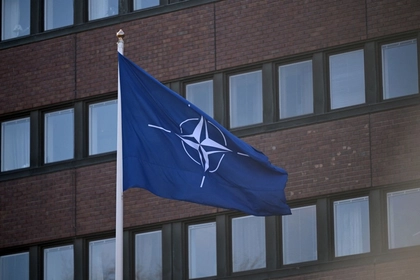It was reported on Tuesday, March 19 that Australia was withdrawing a surveillance aircraft that has been providing oversight for the protection of deliveries of humanitarian and military aid to Ukraine. Contrary to some suggestions in the media, this is not the result of Canberra scaling back on its support to Kyiv but is simply the completion of the originally agreed mission.
The Royal Australian Air Force (RAAF) E-7A Wedgetail, which is based on a Boeing 737-700 airframe, was deployed at the request of the US to assist in monitoring threats to supply routes for aid destined for Ukraine since October. It is based at the US Ramstein Air Base in Germany.
JOIN US ON TELEGRAM
Follow our coverage of the war on the @Kyivpost_official.
This Wedgetail is one of six such aircraft operated by the RAAF’s No. 2 Squadron. The aircraft is billed as one of the world’s most advanced airspace battle management platforms, able to coordinate all elements of a joint air, sea and land battle in real-time.
Simultaneous tracking of airborne and maritime targets is made possible through the recent addition of the Northrop Grumman Multi-Role Electronically Scanned Array (MESA) radar along with 10 state-of-the-art mission crew consoles.
The Wedgetail combines long-range radar surveillance, secondary radar tracking, tactical/strategic voice and data communications systems monitoring while providing airborne battlespace coverage of more than four million square kilometers.

UK Leads Crimean Air Reconnaissance Operations Against Russian Air Defenses
Asked about any Australian involvement in targeting of Russian military or naval assets in Ukraine or the Black Sea, an Australian Defence Forces (ADF) spokesperson told the Guardian that the Wedgetail “operates outside of Russian, Belarusian and Ukrainian airspace. It is not providing surveillance assistance to Ukraine.”
He was at pains to point out that the Wedgetail’s mission was simply to provide “early warning in the unlikely event of an act or threat from Russia, outside of Ukraine, against the gateway of humanitarian and military assistance.”
Asked whether there was any intention to extend deployment beyond the current April deadline, the ADF spokesperson said, “Any future requests for support from Australia’s international partners would be considered in the usual way.” The ADF official suggested that there would be no gap as the role would be filled by other Western monitoring assets.
Australia’s Foreign Minister, Penny Wong announced a further A$50 million ($33 million) grant to the UK-administered International Fund for Ukraine at the end of February. This brought Australia’s total overall support to Ukraine to A$960 million ($632.2 million), from which about A$780 million ($513.7 million) was in military aid.
NATO announced in November that it will replace its existing 14 aircraft Boeing E-3A Sentry AWACS fleet with Boeing E-7A Wedgetails. Six aircraft will be acquired to begin operations out of Geilenkirchen NATO Air Base in Germany with a target date of 2031.
The UK is in the process of purchasing three Wedgetail aircraft and Turkey currently operates four Peace Eagle E-7As. Additionally, it is believed that the US is likely to replace its aging fleet of 26 E-3G Sentry AWACS aircraft with the Wedgetail.
You can also highlight the text and press Ctrl + Enter






